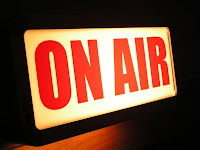It's possible that might change a little, thanks to an unexpected ruling by the normally staid Federal Communications Commission. Yes, that same FCC that has been afraid to peek into the future lest they step on the toes of big broadcasting has given us at least the possibility of something to cheer about and it's called Low Power FM (LPFM).
Originally sanctioned in 2000, LPFM has a maximum of 100 watts and a broadcast radius of 3 miles, but thanks to the lobbying efforts by Big Broadcast, the application process wasn't particularly easy. In fact, only a single LPFM station has been commissioned since then, and the majority of applications were by entities speculating on the popularity of holding a license and cashing in, rather than building stations.
The new FCC ruling set out a streamlined process that limits the applicants to only those that will actually build a station, and eases some of the bandwidth restrictions that Big Radio insisted on to protect their turf. This will all take place next year when the new application process go into effect.
What are the implications of LPFM? Maybe none, maybe a lot. It's been proven that radio is only as good as it's programming and talent. An LPFM station probably won't have much of either, just like college radio (the poster child for low-power radio). That said, it's also not obligated to a corporate playlist, so it's possible to finally have a return to an open playlist like the glory days of early-FM in the 70s (how I long for those radio days). Back then, you never knew what you'd hear next, but if you liked the DJ, you knew you'd probably like what he or she played. With no big money involved, we can only hope that some experimentation will be in order with no reason to focus on the the lowest common denominator dictated by the marketing department.
While we can't expect LPFM to change the broadcast world, it would be nice if we had some local alternatives, even if their reach is only 3 miles. Hyper-local radio is target at your community. The question is, will your community listen?
----------------------------------
Help support this blog. Any purchases made through our Amazon links help support this website with no cost to you.
You should follow me on Twitter for daily news and updates on production and the music business.
Check out my Big Picture blog for discussion on common music, engineering and production tips and tricks.





